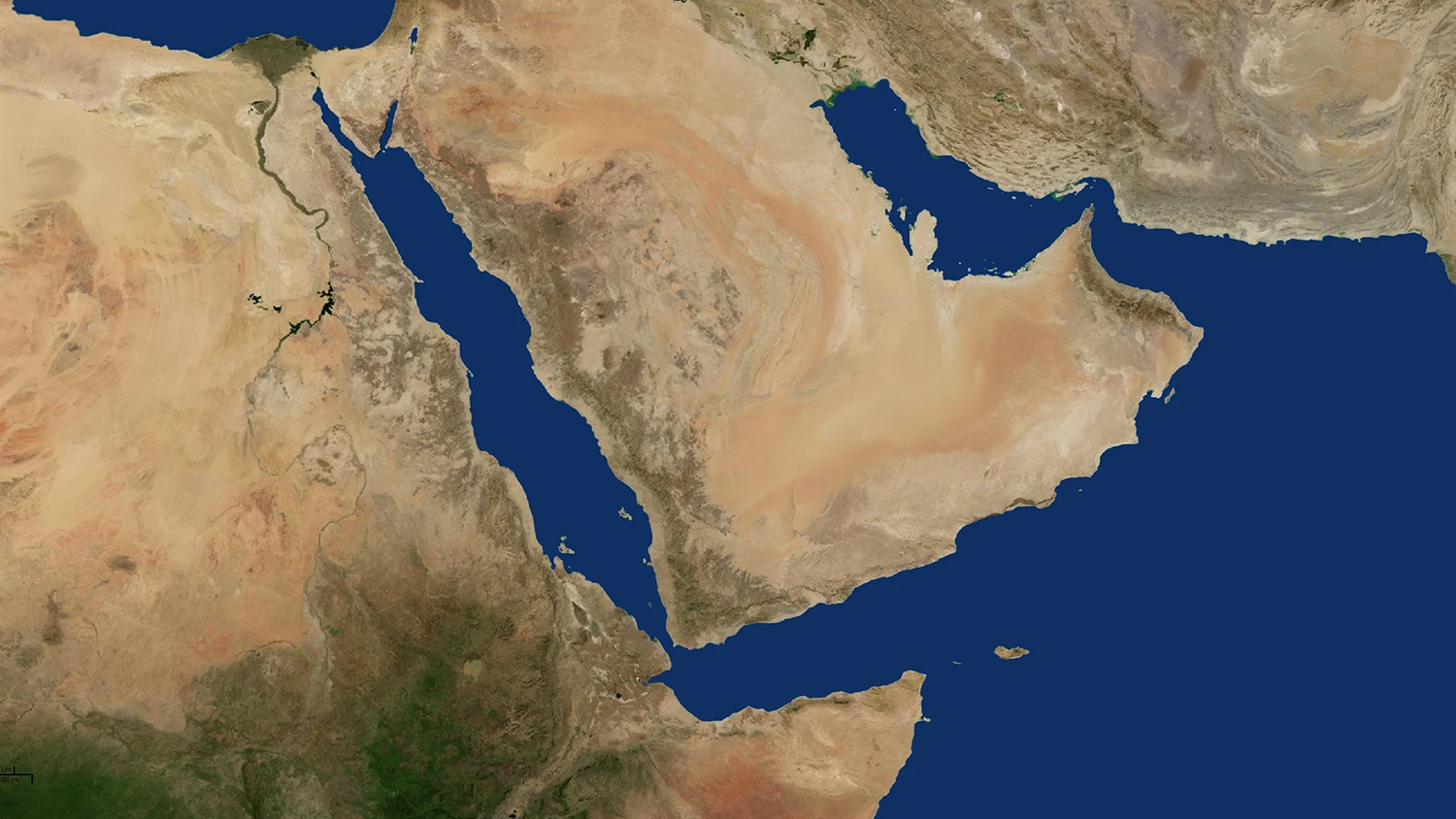Updated 22 April 2024
Following the attack on the Galaxy Leader on 19 November 2023, there have been further incidents in and around the southern Red Sea region, Gulf of Aden, and the Arabian Sea. The first fatal attack took place on 06 March 2024 on True Confidence. Forceable seizure of the MSC Aries on 13th April by the Iranian forces hours before it launched a large-scale drone and missile attacks against Israel which led to retaliatory strikes against targets in Iran on 19 April, highlights the escalating tensions between Iran and Israel.
With their permission, we republish below information extracted from Risk Intelligence’s recent threat assessment circular for our Members with vessels deployed in the region, along with a timeline of key developments.
Threat update
Red Sea and Gulf of Aden
Over the past few weeks, US forces reportedly continued their targeting of missile and drone launch sites in Houthi-controlled areas of Yemen. Naval vessels from several countries also continued interceptions of aerial drones and missiles over the Red Sea. These have effectively decreased the Houthis’ missile launching capabilities and may lead to an increase in the use of lower-level technology tactics such as firing rockets from skiffs or launching naval and aerial drones. However, the actual impact of military strikes on Houthi capabilities cannot be assessed. Reports about strikes are solely based on military sources and not independently verified.
The current threats in the Red Sea and the Gulf of Aden have also led to a noticeable increase in incidents that are perceived as suspicious by seafarers, including in the larger region outside the Red Sea and the Gulf of Aden. Reporting such incidents should be strongly encouraged. At the same time, it is vital to thoroughly assess all reports to identify particular areas of concern.
Persian Gulf and Gulf of Oman
In and around the Persian Gulf region, the primary maritime threat remains actions taken by or supported by Iran to threaten merchant ship transits or port and anchorage areas. Recently Iran had threatened to shut the Strait of Hormuz, as part of strategic messaging following Israel’s strike against the Iranian consulate in Damascus. Since the threat was made, the Portuguese (Madeira) flagged container vessel MSC Aries was seized by Iranian Islamic Revolutionary Guards (IRGC) forces approximately 50NM NE of Fujairah, United Arab Emirates. This has led to speculation that Iran would engage in a campaign similar to that of the Houthis in the Persian Gulf. This scenario is assessed as unlikely by Risk Intelligence.
The seizure is likely better understood in the context of political signaling to Israel and the US and to the Iranian domestic audience. Iran has been seizing and holding vessels for years as a means of dealing with commercial disputes, typically related to US and EU sanctions against oil exports. Some notable examples are mentioned here . It also includes list of vessels that have been attacked by Iran.
Both the countries have also launched aerial strikes against each other. Direct military confrontation between Iran and Israel has the potential to further destabilize the Middle East. For maritime operators, this may have significant implications. The situation should therefore be closely monitored.
Summary of the incidents that have taken place in the last 30 days can be found here. Reference can also be made to UKMTO’s website and periodic reports by the Office of Naval Intelligence of the US Navy for an overview of the recent incidents in the Red Sea and Gulf of Aden.
Traffic situations in Bab-el-mandeb straits
Houthi attacks against maritime traffic have caused a significant decrease in ship transits through the Bab el Mandeb. It is unlikely that traffic will see a significant further decrease after the current level has remained more or less constant since late January. It is too early to say whether a sustainable increase in maritime traffic will take place in the coming weeks. While such an increase is possible due to the increased presence of naval vessels, commercial pressure on ship owners and operators is more likely to be a relevant factor.
Transits during the past weeks have consistently remained roughly 50% lower than during the same timeframe in 2023, and the gap has remained relatively constant since late January, although there was a slight increase in in early April. Less than 10% of ships passing the Bab el Mandeb are following naval recommendations to disable AIS. Another indicator that suggests a relatively stable amount of maritime traffic in the Red Sea in the coming weeks is the number of Suez Canal transits, which has remained at slightly above 200vessels per week for the past 8 weeks, with a slight and unsustained uptick in the recent past possibly due to an increase in trade linked to preparations for the Ramadan festivities.
Tiered affiliation risk
Overall, the threat level to vessels directly owned by Israeli companies had been severe since the beginning of the Houthi campaign.
Military action by the US and the UK has led to another expansion of the Houthis' target pool, underlined by widely-publicized threats particularly against the US. This has resulted in a severe threat level for vessels directly linked to the US and UK. For other countries directly supporting military strikes under Operation Poseidon Archer, the threat level is at the same level, although it should be noted that the Houthis have not yet made any specific threats against these countries.
For merchant ships linked to countries solely taking part in or supporting Operation Prosperity Guardian or Operation Aspides which both have a purely defensive focus, the threat level is assessed as lower compared to countries participating in offensive military actions against the Houthis. For all other commercial vessels, the same threat level applies.
For vessels not related to countries taking part in Operation Prosperity Guardian or Operation Aspides, this is largely due to the potential for merchant ships being targeted due to misidentification or use of outdated information in publicly available databases. Proximity to kinetic attacks or proximity to interceptions of drones and missiles by military forces could also lead to collateral damage.
| Vessel type | Threat type | Threat level |
|---|---|---|
| Vessels specifically linked to Israel through ownership, port calls, trade with and/or commercial relationship between Israeli companies and owners/operators | Kinetic attack (missile, aerial/waterborne drone), possibly seizure and detention | Severe |
| Vessels linked to the United States, United Kingdom and other countries involved in Operation Poseidon Archer | Kinetic attack (missile, aerial/waterborne drone), possibly seizure and detention | Severe |
| Vessels linked to other countries participating in or supporting Operation Prosperity Guardian or Operation Aspides | Kinetic attack (missile, aerial/waterborne drone), seizure and detention | Elevated |
| Other merchant ships in transit through the Red Sea / Bab-el-Mandeb | Kinetic attack due to misidentification, potential proximity to the above threats ('collateral damage') | Elevated |
The tiered affiliation risk assessment mentioned above is for the Red Sea and the Gulf of Aden region. For merchant vessels operating in and around the Persian Gulf region, aggressive enforcement by Iran of its waters is expected to continue. Threats to vessels remain broadly moderate to elevated, although the threat level may be higher based on individual characteristics of specific ships, for example for vessels with an Israeli affiliation.
Mitigation measures
Company Security Officers, and Masters and Ship Security Officers of vessels transiting or preparing to transit this region are advised to consider the following in their voyage specific risk assessment:
Analyze the commercial affiliation of the vessel to assess the threat level for the planned type of operation.
Constant monitoring of the security situation, enabling vessels to avoid locations with recent or ongoing incidents.
Introduction/update of contingency plans on the company level to address the possibility of seafarers being injured, killed or kidnapped during a security incident. Drills should also be carried out involving shore management.
Crew briefings and scenario drills based on a valid and relevant anti-attack plan to ensure that incidents are reported and alarm is raised without delay when required. Drills should include scenarios with major damage and casualties.
Enhancement of firefighting, evacuation and damage control procedures, taking into account the possibility of significant damage as a result of direct targeting or collateral damage.
Enhancement of medical equipment to deal with multiple casualties.
Emergency contacts placed readily available on the bridge.
Briefing of the bridge team on hailing/harassment via VHF, prepared responses and immediate contact with naval forces in the respective area. (Local authorities' calls on VHF may be an act of spoofing or even targeting, underlined by several incidents in recent past which involved self-proclaimed 'Yemeni authorities' or the 'Yemeni navy' ordering merchant ships to alter course). Combined Maritime Forces also recommend ignoring VHF calls by "Yemeni navy" and are advised to contact a coalition warship on VHF Channel 16.
Preparation of citadel with emergency provisions and functioning satellite phone.
Depending on individual circumstances, embarkation of armed guards may be useful to mitigate specific risks, specifically in relation to the threat of boardings from small boats (e.g. Houthi forces, Somali piracy). However, the threat of direct targeting by missiles, aerial or naval drones used by Houthi forces in Yemen (southern Red Sea / Gulf of Aden) or boardings by the Iranian forces cannot be mitigated by embarkation of armed guards.
In general, existing BMP5 recommendations have been developed to deter piracy. While the guidance included in BMP5 is relevant to deter illegal boardings, it offers virtually no mitigation against current threats such as attacks by missiles, drones or – potentially – waterborne IEDs ('drone boats') or forceable seizure.
Ship operators should also consider issuing specific voyage guidance for transits through the Red Sea, Gulf of Aden, Gulf of Oman and the Persian Gulf.
Ships with AIS powered on, as well as off, have been attacked. Turning off AIS makes it marginally more difficult to track a ship but may also hinder the ability of the military to provide support or direct contact.
Based on Risk Intelligence’s assessment, less than 10% of ships passing the Bab el Mandeb are following naval recommendations to disable AIS. Nonetheless, if a decision is made to turn off the AIS, then the frequency of reporting the vessel’s position to UKMTO and NAVCENT NCAGS should be increased.
There have been reports of GPS signal disruption in Israeli ports and the Red Sea. Same can also be expected in and around the Persian Gulf region. It is therefore important that Mariners are able to recognize a compromised GPS environment and familiar with alternative means of position fixing methods.
Other key developments
Some of the notable developments since the seizure of Galaxy Leader are as follows:
The Joint War Committee (JWC) widened the risk area in this region. It has been extended northward in the Red Sea from 15 deg N to 18 deg N. JWLA-32 is available here.
The International Bargaining Forum (IBF) has included the Red Sea in its high risk area for crew contracts. The updated warlike and high risk areas are available here. It is to be noted that the boundaries of the IBF high risk and warlike areas are different from the JWC listed areas.
Industry associations, such as BIMCO, Intertanko, Intercargo and others have come together to publish security guidance applicable to navigating in the Southern Red Sea and Gulf of Aden. The transit advice was last updated on 05 February 2024 and is available here
Combined Maritime Forces (CMF) have issued a guidance document for ships navigating the southern Red Sea. It was last updated on 23 December 2023.
US Department of Transportation have published MSCI Advisory 2024-006 for the Red Sea, Gulf of Aden, Arabian Gulf and Persian Gulf region.
Some Flag States, such as Panama, Liberia, Marshall Islands and Norway
have published security circulars for their vessels when transiting this region.
Operation Prosperity Guardian commenced in the Red Sea region (south of 20 deg N) on 19 December 2023 to support the freedom of navigation. Vessels transiting in the SRS will note a significant increase in the number of coalition warships and aircraft operating in the area as part of this operation. Details are available on Maritime Global Security’s website.
The European Union launched Eunavfor Aspides on 19 February 2024. Operation Aspides will ensure an EU naval presence in the Red Sea area and reportedly EU interests will be prioritized.
In November 2023, the industry associations of ICS, BIMCO, CLIA, INTERCARGO, IMCA, OCIMF and INTERTANKO had developed routing advice for the region to aid passage planning as a reaction to the maritime threat environment in this area. This transit corridor guidance is available at the Industry Maritime Security website.
We would like to thank Risk Intelligence for sharing their threat assessment with us and for their recommendations to our Members and clients. Vessels are also advised to contact their Flag States for additional guidance, if any.
Other articles related to the conflict between Israel-Gaza, including contractual implications can be found on our hot topic page ‘Israel/Gaza conflict’.



